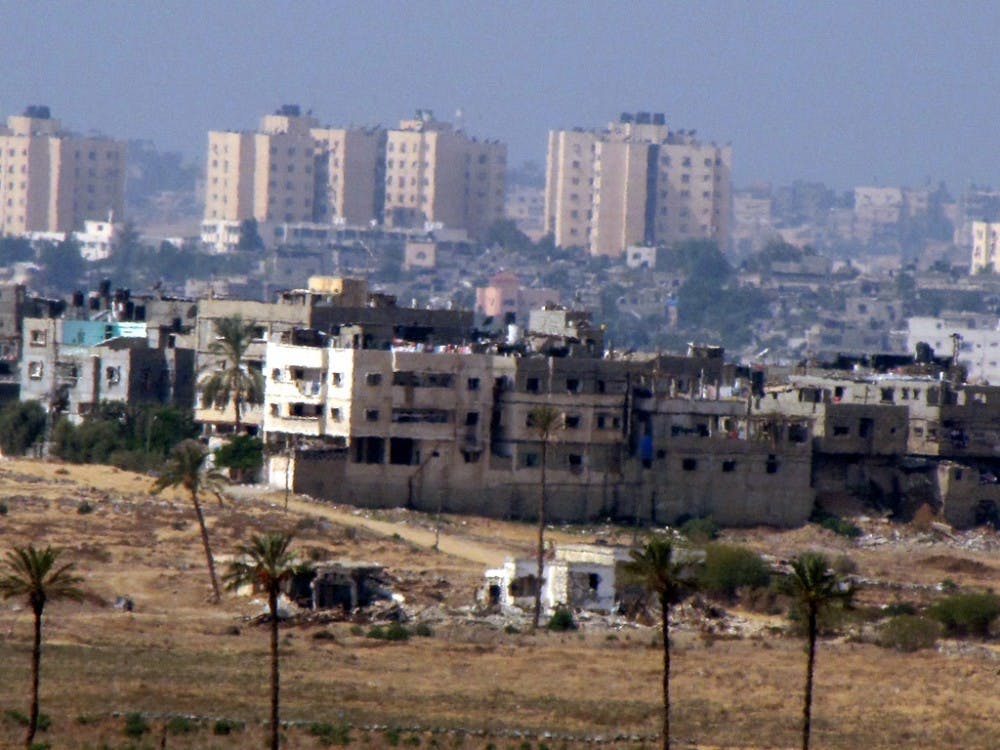Thousands of Palestinians in Gaza have been peacefully protesting the ongoing occupation of their land and advocating for their right, as well as that of Palestinian refugees, to return to lands illegally occupied by the Israeli state since March 30 of this year. There are currently over five million registered Palestinian refugees in the Middle East, according to the United Nations relief and work agency for Palestinian refugees. The Israeli government’s response to these nonviolent demonstrations is brutal and is in flagrant violation of international law.
Often described as the most densely populated open air prison in the world, Gaza is extremely deficient in basic infrastructure and utilities necessary for maintaining life. According to a recent report by the United Nations, a majority of Gazans spend most of the day without electricity. Moreover, the people living in Gaza, except in very special situations, are restricted from leaving, exporting goods, and working throughout Palestine. The unemployment rate is over 40%. According to a report published by the United Nations Conference on Trade and Development in 2015, Gaza will be unlivable by 2020 unless major changes are made.
The sequestering of Gaza has relied on the so-called security fence. Built in 1994, the fence covers the entire land border of Gaza. This barrier physically separates Palestinians from their ancestral land and families and is replete with military checkpoints. Recently, Israel has contracted Elbit Systems to build a forty-mile long subterranean concrete wall around Gaza, the first of its kind.
It was within this context that Gazans demonstrated en-masse near the militarized barrier separating Gaza from the rest of Palestine on March 30th. All images, videos, and independent reports have confirmed that the demonstration was nonviolent, and that no one crossed the barrier.
In response, Israeli snipers opened fire with live ammunition, killing over 17 civilians and injuring over 1,400 more. Multiple journalists, clearly wearing press jackets, have been killed and wounded. Refusing to be silenced by violence, Palestinians have continued marching. Thousands of unarmed Palestinians are currently marching in the face of the massacres committed by the Israeli apartheid state. These demonstrations, called the Great March of Return will soon close their third week.
Representatives of the state of Israel have not only refused to launch an internal investigation into this ongoing massacre, but have also openly praised the killings - Defense minister Avigdor Lieberman stated on April 8th that “there are no innocent people in Gaza.” They claim that the March to Return is a threat to Israeli national security, and that the Palestinian protesters are armed terrorists trying to violently infiltrate Israel and commit acts of terror.
On the other hand, human rights organizations, such as the Israel-based B’Tselem disagree that the march is a threat to the security of the state of Israel. They cite the fact that the protesters have been demonstrably unarmed. How could thousands of unarmed people pose a physical threat to the security of a nuclear-armed state with military backing from the United States?
In reality, the March of Return does represent a threat to the security state of Israel. Not a threat of terrorism - the Palestinians are, as has been independently verified by the United Nations, protesting peacefully - but instead a threat to the settler colonial state that relies on border walls, forced separation, and continual annexation and occupation to remove the indigenous people of Palestine. The massacre in Gaza is about the security of Israel as understood and practiced by a settler colonial state. Anything short of complete silence from Palestinians is met with violence. From the rampant deportation of asylum seekers, to the maintenance of the apartheid wall in the West Bank, to the massacre along the separation barrier enclosing Gaza, it is abundantly evident what security means. Security to a settler colonial state means the ability to expand indefinitely while suppressing the indigenous population. It means physically separating families while simultaneously violently quashing resistance of any form. Most importantly, it means depicting any resistance as a military threat, a claim that completely ignores the power imbalance at play.
In summary, the March of Return represents a threat to these physical markers of subjugation. The crossing of the security fence by Palestinians would be a visual demonstration that the ongoing repression and dehumanization of the Palestinian people can no longer be contained.
It is necessary and just to dismantle the infrastructure and physical symbols of settler colonialism and apartheid, from Israel to the United States. The dismantling of border walls and other separation barriers is integral to the liberation of the Palestinian people and the rights of immigrants and asylum seekers worldwide.
Here at Hopkins it is critical that students, especially those who are U.S. citizens, speak out specifically against the U.S. military support of the state of Israel. Moreover, it is important that discussions surrounding Palestine occur in an honest context that recognizes the enormous power imbalances at play as well as the settler colonial history of the state of Israel.
Furthermore, it is necessary for the people of the United States to stand up against and be critical of massacres funded by our tax dollars. Resist the occupation and say no to walls from Palestine to Mexico.
Long Live Palestine!
Aurel Malapani-Scala and Alyssa Thomas are both members of Students for Justice in Palestine, which collaborated to write this piece.
Correction: An earlier version of this piece incorrectly stated that there are over 5 million Palestinian refugees in Gaza. UNRWA provides assistance to over 5 million registered Palestinian refugees throughout the Middle East, including 1.3 million refugees in Gaza.

















